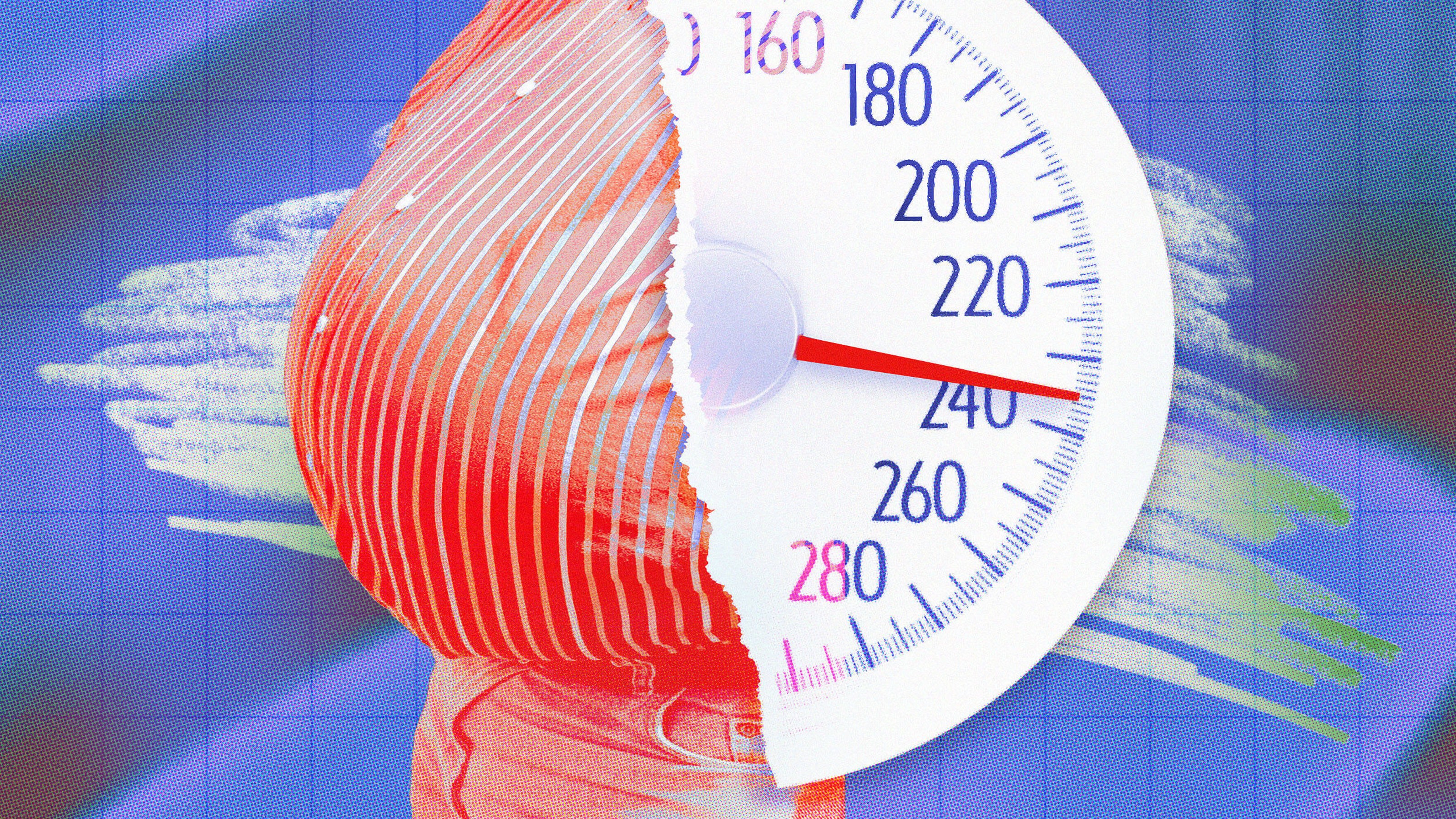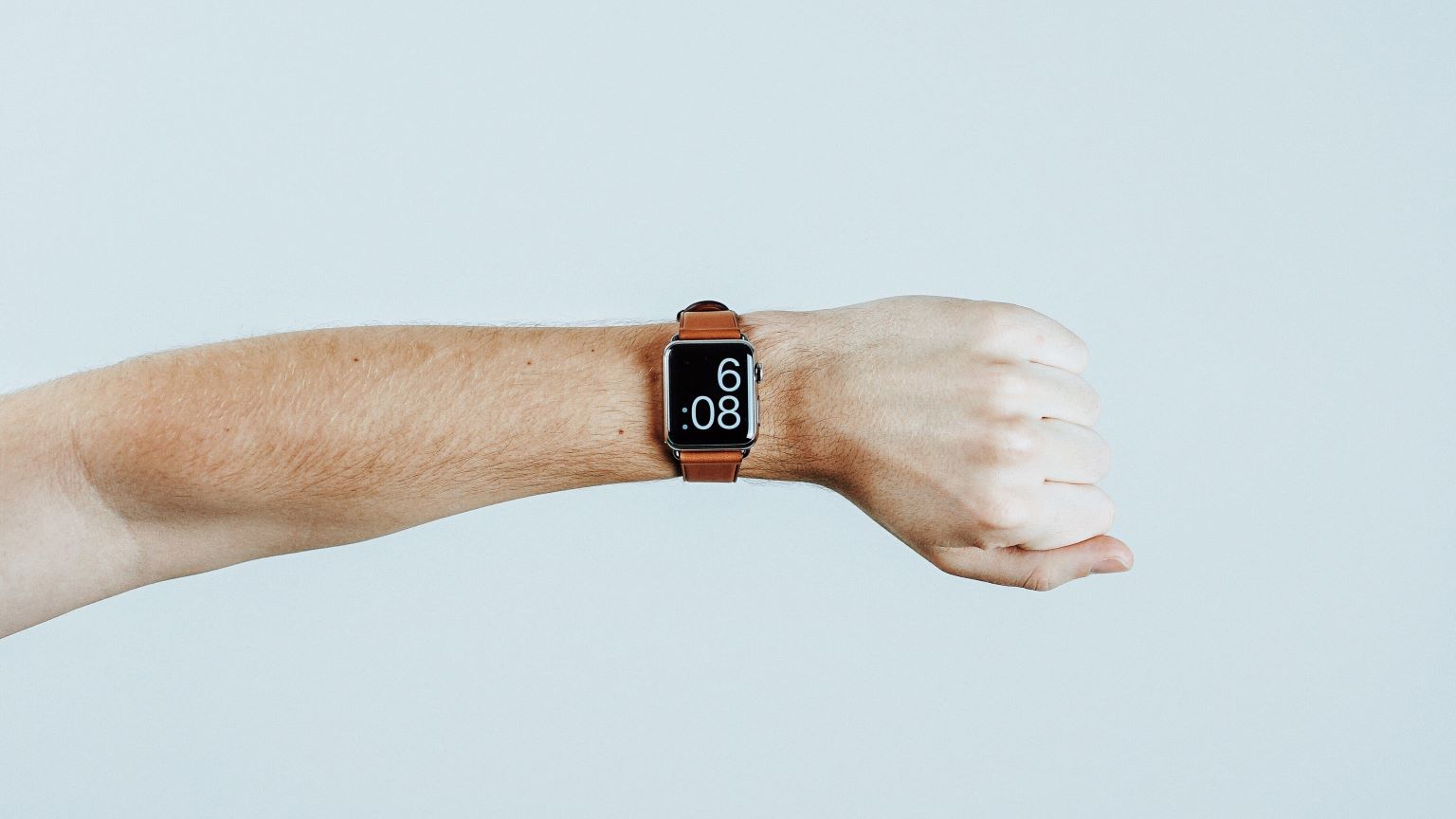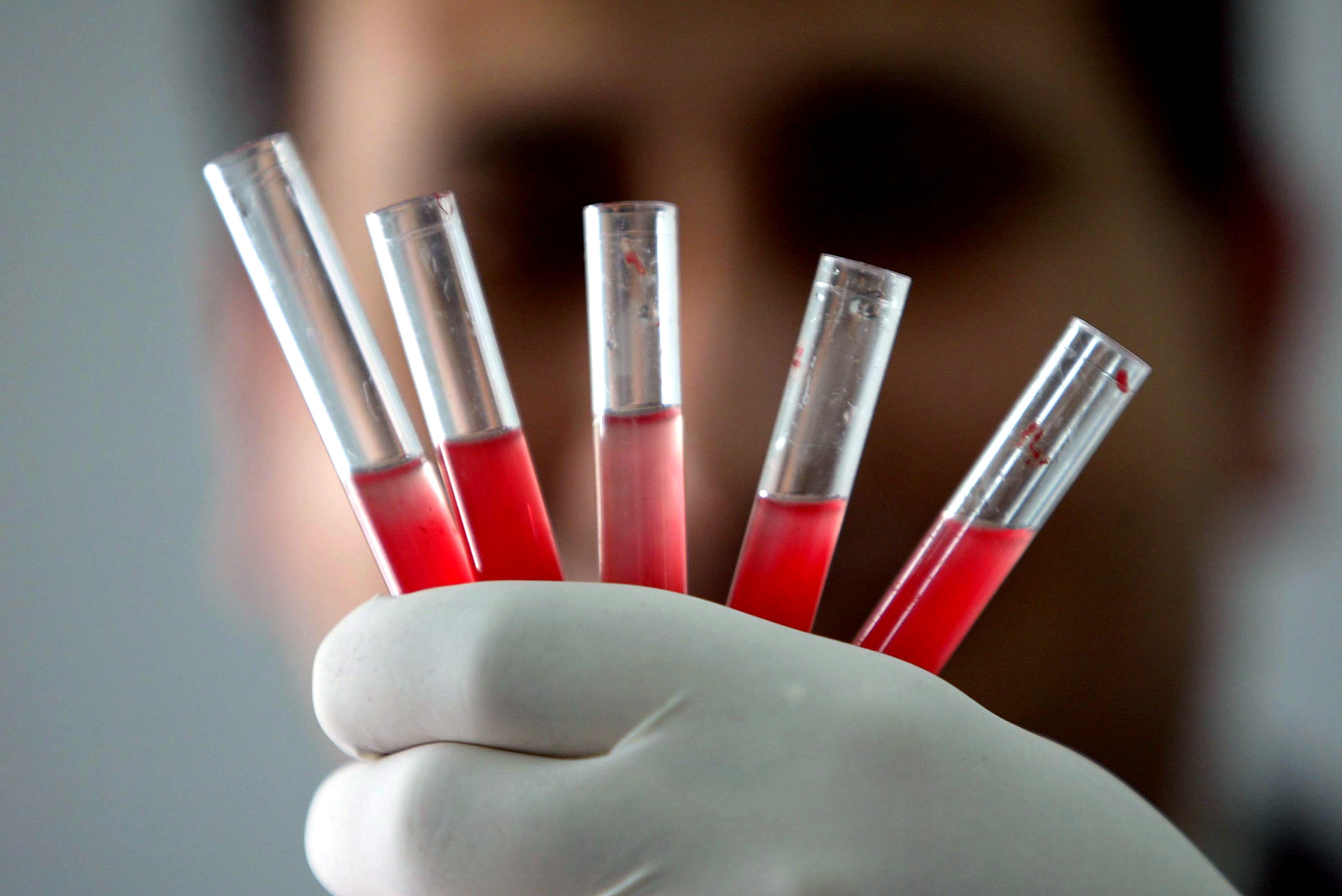9 most common New Year’s resolutions — and how to make them happen

(Photo from Wikimedia Commons)
- The top three New Year’s resolutions for 2018 were to eat healthier, get more exercise, and save more money. Care to guess what the top three are this year?
- We check in with experts to devise strategies for tackling the most common New Year’s resolutions.
- Knowing exactly what you want to accomplish and how you will do it can help increase your chances of success in 2019.
With New Year’s rounding the corner, everyone is sharing their 2019 resolutions, and it’s giving us that auld déjà vu. According to a 2017 YouGov survey, the top three resolutions for 2018 were eating healthier, getting more exercise, and saving more money. According to a 2018 survey, the top resolutions for next year are — wait for it — to exercise more, lose weight, and save money.
Clearly, we’ve missed the mark. To kick off New Year’s right, let’s look at last year’s most popular resolutions and see how we may be able to make them happen in 2019.

Photo credit: Stella de Smit on Unsplash
Eat healthier
Eating better is a laudable goal, one many of us could strive to improve on. Don’t fall for dietary fads, though. They help us neither live healthier nor lose weight.
“Everyone is blaming dieters for regaining weight they lose, and that’s just wrong — it’s not their fault they regain weight, and it’s not about willpower, or any lack thereof,” Dr. Traci Mann, of the University of Minnesota’s Health and Eating Lab, told the Washington Post.
Mann notes diets trigger three physiological changes that make it difficult for us to maintain them. The first is neurological (dieters’ brains become programmed to notice food more); the second is hormonal (diets increase the hormones that make people feel hungry); and the third is biological (when you try to lose weight, your body starts to store calories as fat).
“For practically any diet — crazy or not crazy sounding — in that first six to 12 months, people can lose about 10 percent of their starting weight,” Mann continues. “But the short run isn’t the whole story. Everyone acts like the short run is the whole story, and that anything that happens later is the dieter’s fault and not really part of the diet.”
If your resolution is to eat healthier, don’t diet. Speak with your doctor to devise healthy meal plans that don’t starve your body but, instead, focus on healthier foods — fruits, vegetables, less salt, more fish, and so on — that you can enjoy for the long run.
Get more exercise
Again, don’t start exercising with the goal of losing weight. Many factors combine to create your metabolic rate, including basic body functions, digestive functions, and physical activity. Physical activity only accounts for 10 to 30 percent of the total rate, and exercise is an even smaller subset of that.
With that said, exercise is one of the best habits for maintaining a healthy mind and body and increasing quality of life. Here are two tips to make it stick:
First, don’t push yourself to exhaustion every workout session. Trainer Firas Zahabi argues that consistency in training will benefit you far more.
“Let’s say the maximum number of pull-ups you can do is ten,” Zahabi explains. “Should I make you do ten pull-ups on our workout? No, I’m going to make you do five, because I’m setting you up to work the next day. The next day we’re going to do five. And then we’re going to do six.”
If you can do ten pull-ups but need a three days to recover, then the maximum number you can do a week is eight. But if you can do five a day consistently, you can manage 35 pull-ups a week. Whatever the exercise, Zahabi’s flow-state method allows you to increase volume without sore muscles.
Then, reward yourself immediately after the workout. As Charles Duhigg told Big Think, enjoying a reward, such as a piece of chocolate, immediately after the workout wires your brain to associate exercise with that pleasure. Soon the endorphins will kick in at the thought of the exercise, with or without the chocolate.

Not an ideal way to start saving in 2019, but better than some people’s plan.
Image source: Wikimedia Commons
Save more money
We all need an emergency fund or to save for retirement, but everyday expenses cut deeper into our paychecks with each year.
According to the USAA Educational Foundation, one way to help you save is to pay yourself a committed percentage first. Figure out how much of your monthly gross you can safety set aside — they recommend 10 to 20 percent — and treat it like taxes. It comes right off the top. No excuses.
Another good saving technique is pay down your credit card bill as quickly as possible. In 2018, the average interest rate on a new credit card hit a record of 16.71 percent. Meanwhile, the average savings account’s annual percentage yield is a mere 0.09 percent. Kill the credit card debt, so it doesn’t offset what you manage to save.

Plan on improving self-care for your New Year’s resolution? Then make sure you to sleep like this in 2019. Image source: Pixabay
Focus on self-care
This one will mean different things to different people, so we’ll stick to the activity that is the cornerstone of all self-care: sleep. According to the CDC, thirty-five percent of American adults get fewer than seven hours of sleep a night.
If you are one of those adults, here are a couple tricks to getting your sleep schedule back on track:
- Stick to the same sleep schedule every day.
- Keep your bedroom cool, free of light, and limit as much noise pollution as possible.
- Don’t drink alcohol before bed. Try chamomile tea or warm milk instead.
- Avoid the bright, blue-tinted light of electronics before bed. It wrecks your circadian rhythm.
Remember, the average adult should get between seven and nine hours of sleep a night, but everybody is different. Find your required sleep time and make sure to get it.
If sleep isn’t your self-care resolution, make sure you know exactly what it is you want to change. Don’t simply tell yourself, “I want to get fit and healthy.” Vague, indefinite goals will ensure you don’t have a means to navigate to that end. The more specific your resolution, the better your chances.

Reading more: the coziest resolution you can make this year. (Photo from Pexels)
Read more
The best trick for reading more is to always have a book at the ready. Neil Pasricha, at Harvard Business Review, recounts this illuminating story:
A good friend once told me a story that really stuck with me. He said Stephen King had advised people to read something like five hours a day. My friend said, “You know, that’s baloney. Who can do that?” But then, years later, he found himself in Maine on vacation. He was waiting in line outside a movie theater with his girlfriend, and who should be waiting in front of him? Stephen King! His nose was in a book the whole time in line. When they got into the theater, Stephen King was still reading as the lights dimmed. When the lights came up, he pulled his book open right away. He even read as he was leaving.
The same goes for doctor’s offices, break rooms, and airport terminals. These small moments add up to a lot of quality reading time.
Another tip is to do your reading with a physical book or dedicated e-reader. Not a tablet or smartphone. Tablets and smartphones may lure you away from reading with just one more YouTube video to watch, Facebook post to like, or Twitter kerfuffle to leap into.
Make new friends
All you must do to make friends is banish your social jitters, be confident in yourself, and not alienate people with boorish behavior. Simple, right? Obviously not or it wouldn’t be on this list. Don’t think this one is just here for the introverts, either. While many extroverts have mastered chitchat, many can feel they lack those deeper social connections.
Entrepreneur and author Andrew Horn shared with Big Think his advice for gaining confidence in conversation. He said:
In any moment you can ask yourself am I doing this because I want to or because I think people will like it? If we’re basing it off of the reality that someone else will like it, we’ll never really know. We open ourselves up for that social anxiety, the fear of negative judgment, the unknown of external validation. So, we can always ask ourselves what do I want to do right now? What is interesting to me? What will feel good to me? And act off of that to eliminate social anxiety to bring more confidence into our conversations. So that’s how we find our authentic voice and use it.
Horn notes that looking for external validation only burdens you with social anxiety, making it more difficult to find friends or conduct business. Ironically, it is through internal validation that we find the confidence to connect with other people.
How do we manage internal validation? Horn recommends creating what he calls the “curiosity compass,” a series of questions that you genuinely want to ask other people. Such questions help make connections because you will be interested in their answers and because others enjoy the feeling of being found interesting.
Learn a new skill/hobby
We want to learn new skills or hobbies as a means to enrich our lives. Instead, we find ourselves idling our free time away with another TV binge. Of course, we tell ourselves, once we catch up with the current season, we’ll definitely learn to play the piano. Except Netflix just ordered two more seasons of The Chilling Adventures of Sabrina.
A paper in the Journal of Positive Psychology looked at why people devote their time to “passive activities,” such as Facebook or watching TV, compared to “flow activities” like learning a new skill or hobby. Participants reported they engage with passive activities because they are easier and more enjoyable. While participants believed flow activities would result in a deeper, more lasting happiness, they found the effort to engage a major hurdle.
The researchers suggest people use techniques to reduce the effort of getting into the flow. If you’re looking to try your hand at creative writing, for example, you should have your computer set up ahead of time and know where you are going to start writing. Blacklisting sites like Netflix and Facebook may not hurt either.
Get a new job
Most people find employment through networking, leading them to the cliche, “It’s not what you know, it’s who you know.” There’s some truth to that, but risk-taking expert Barnaby Marsh believes there’s a deeper truth at play. He argues that it really centers on people developing social networks were an opportunity one person can’t capitalize on can instead be passed on to another.
And when you’re astute to many, many opportunities, by definition you can’t pursue and you can’t take all of them. But what do you do with them? The best thing to do is to share those opportunities with other people that you know who could use those opportunities. And as you share them you’re creating a bond and the preconditions for prosocial activity to happen in the future. Lucky people almost always share their luck with other people, and it comes back to benefit them in great ways.
Connecting with others, and sharing what luck and talents you have, is a great way to lay the seeds for networking a new job.
Don’t make a New Year’s resolution
One way to not be disappointed by your resolution is to not make one. The problem with this approach is that New Year’s resolutions are decent tools for change.
According to a study published in the Journal of Clinical Psychology, New Year’s resolvers reported higher success rates than nonresolvers at modifying a life problem. Forty-six percent of resolvers were successful, while only 4 percent of nonresolvers managed the feat.
“Self-efficacy, skills to change, and readiness to change assessed before January 1 all predicted positive outcome for resolvers,” wrote the researchers.
While you can certainly avoid failure by not making a resolution, the New Year’s atmosphere of newness appears to open our mind’s willingness to accept that change. Even if it’s not the most original resolution, it can still bring a valuable change to your life.
(Didn’t find your New Year’s resolution on the list? No worries. Check out our article on brain hacking your New Year’s resolution for more general advice on how to make change stick.)





